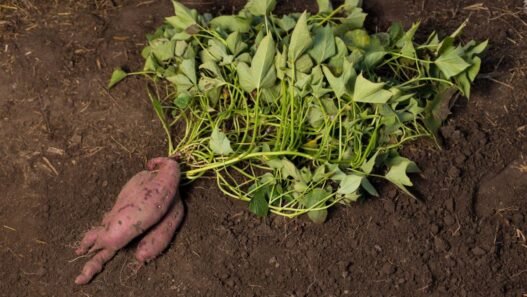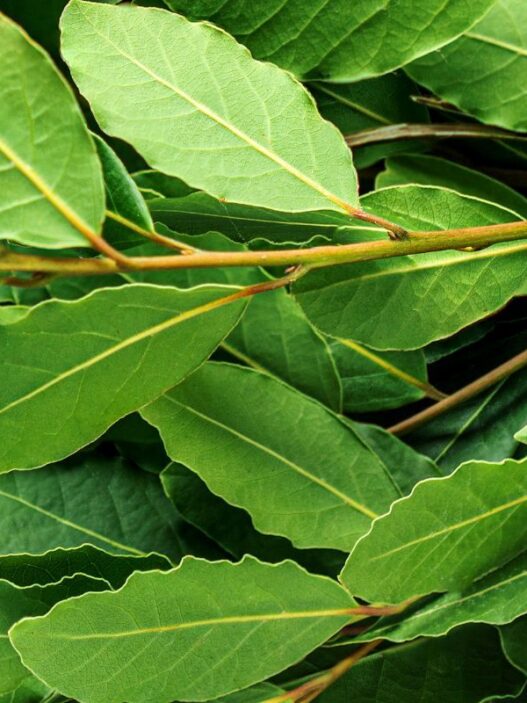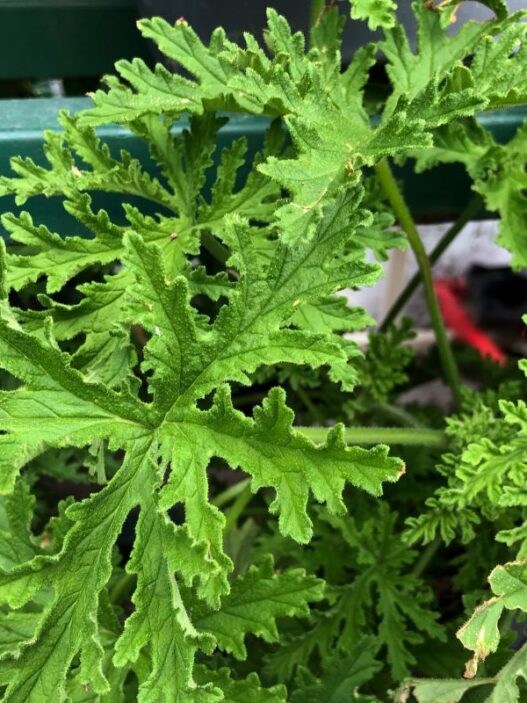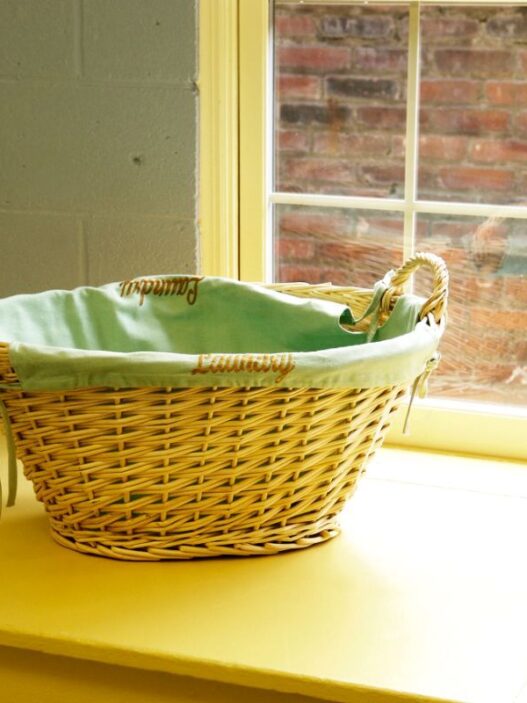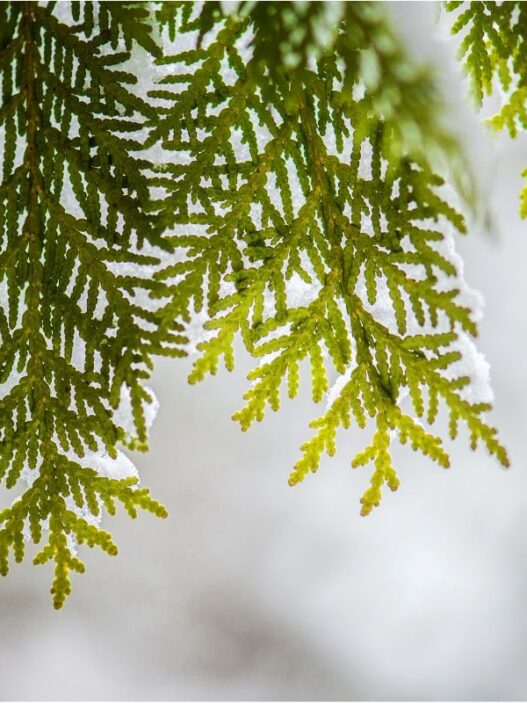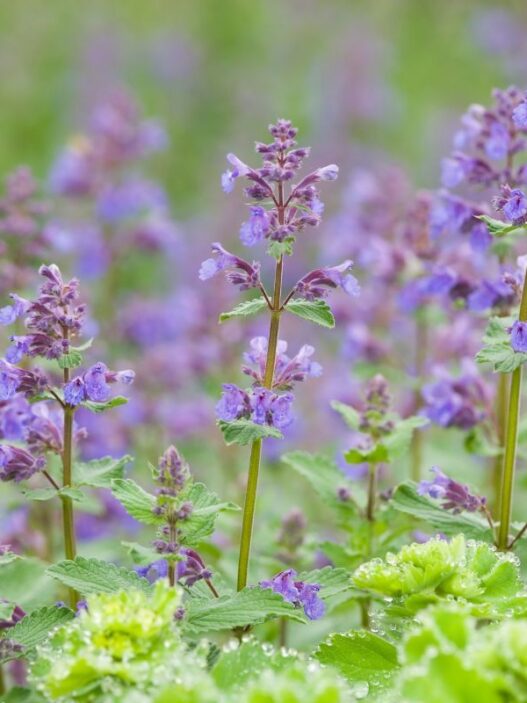I’ve planted both potatoes and sweet potatoes for many years, but it’s only recently that I tried planting them together. Did that work?
In short – yes!
Potatoes and sweet potatoes are excellent companion plants and can be grown together. They can both benefit from being in close proximity to one another. They share the same ideal soil type and also enjoy the same growing conditions.
In this post, I’ll take a look at:
- Can potatoes and sweet potatoes be grown together?
- How are potatoes and sweet potatoes related?
- An overview of what companion plants are
- Some plants to avoid pairing with potatoes or sweet potatoes

Can Potatoes and Sweet Potatoes Be Planted Together?
Potatoes, along with parsnip and beets, make great vegetable companion plants that happily grow with sweet potatoes. You could grow both plants without using much of your garden’s precious space.
Because they’re native to Central and South America, both potatoes and sweet potatoes prefer to grow in nice warm soil with a fairly acidic pH level between 5 to 6. This makes it easy for you to pair them together.
To maximize the benefits of companion planting even more, you could add some herbs, such as summer savory or dill, to protect your plants from sweet potato weevil and flea beetles.
And for decoration, you could plant some marigolds to further benefit your plants and protect them from root nematodes. There’s also sweet alyssum, which can protect your crops from wasps.
Are Potatoes and Sweet Potatoes Related?
Many people may think that because both vegetables have the name potato, then they’re similar or belong to the same family. That couldn’t be further from the truth.
On the contrary, their name is one of the few things that potatoes and sweet potatoes have in common. That and the fact that they’re both root vegetables, which I guess makes them distant cousins.
Other than that, potatoes and sweet potatoes are totally different vegetables.
Characteristics of Potatoes
Potatoes are from the Solanaceae family, commonly known as the nightshades. Their skin is shades of brown or dark yellow, and their flesh is either white or yellow.
Potatoes are also a great source of potassium when compared to sweet potatoes.
Potatoes need to be gardened in cool weather and get plenty of sunshine throughout the day. Ideally, they’re planted mid-spring, when the soil’s temperature rises above 45℉.
Characteristics of Sweet Potatoes
Sweet potatoes are from the Convolvulaceae family, commonly known as the morning glory family. They have brown skin but differ in the color of their flesh based on their type. It could be yellow, orange, red, or even purple.
Sweet potatoes have an incredibly high content of vitamin A. 100 grams of sweet potato has almost 107% of your daily vitamin A value. They’re also rich in antioxidants, which help your body counter the harmful cell damaging effect of free radicals.
Compared to potatoes, sweet potatoes need much warmer weather to grow. These plants thrive in long hot seasons where the soil’s temperature is at least 60℉ — tho it’s better if the temperature rises to 75℉ or 80℉.
To sum up the differences, here’s a little table to help you visualize it.
| Point of Comparison | Potato | Sweet Potato |
| Family | Solanaceae | Convolvulaceae |
| Outter Color | Shades of brown or yellow | Brown |
| Inner Color | White or yellow | Yellow, orange, red, and purple |
| Main Nutrients | Potassium | Vitamin A & antioxidants |
| Gardening Conditions | Cool temperature, around 45℉ | Long hot seasons, with temperatures from 65℉ to 90℉. |
Although their differences, potatoes, and sweet potatoes make great companion plants!

What are Companion Plants?
Companion plant is a name used to call plants that benefit each other when planted together or next to each other. Doing so will…
- Help your plant grow into a healthy plant
- Protect the plant from harmful pests, infections, and diseases.
- Replenish the soil with nutrients
- Balance and aerate the garden’s soil with different root systems
- Improve the flavor of your homegrown vegetables and any other edible part of the plant.
- Maximize the available space in your garden.
So not only do companion plants protect and improve their neighboring plants, but they also help you use your gardening area to its fullest potential.
You get some extra space to grow more products or simply plant some flowers to decorate your yard.
Plants to Avoid Pairing with Potatoes or Sweet Potatoes
Just like pairing your plants with the right companion plants can benefit both of them, pairing sweet potatoes or potatoes with the wrong companion plant can ruin all your hard work.
For example, growing squash, pumpkin, or any vining plant next to your potatoes and sweet potatoes will negatively affect your plants.
That’s because squash and pumpkins will compete with your plants for space and won’t allow them to grow properly.
Another example is sunflowers, which could cause potatoes and sweet potatoes to attract a disease called potato blight.
If a plant is infected with this disease, it must be removed completely. This is the same disease that caused the Irish famine in the 1840s.
